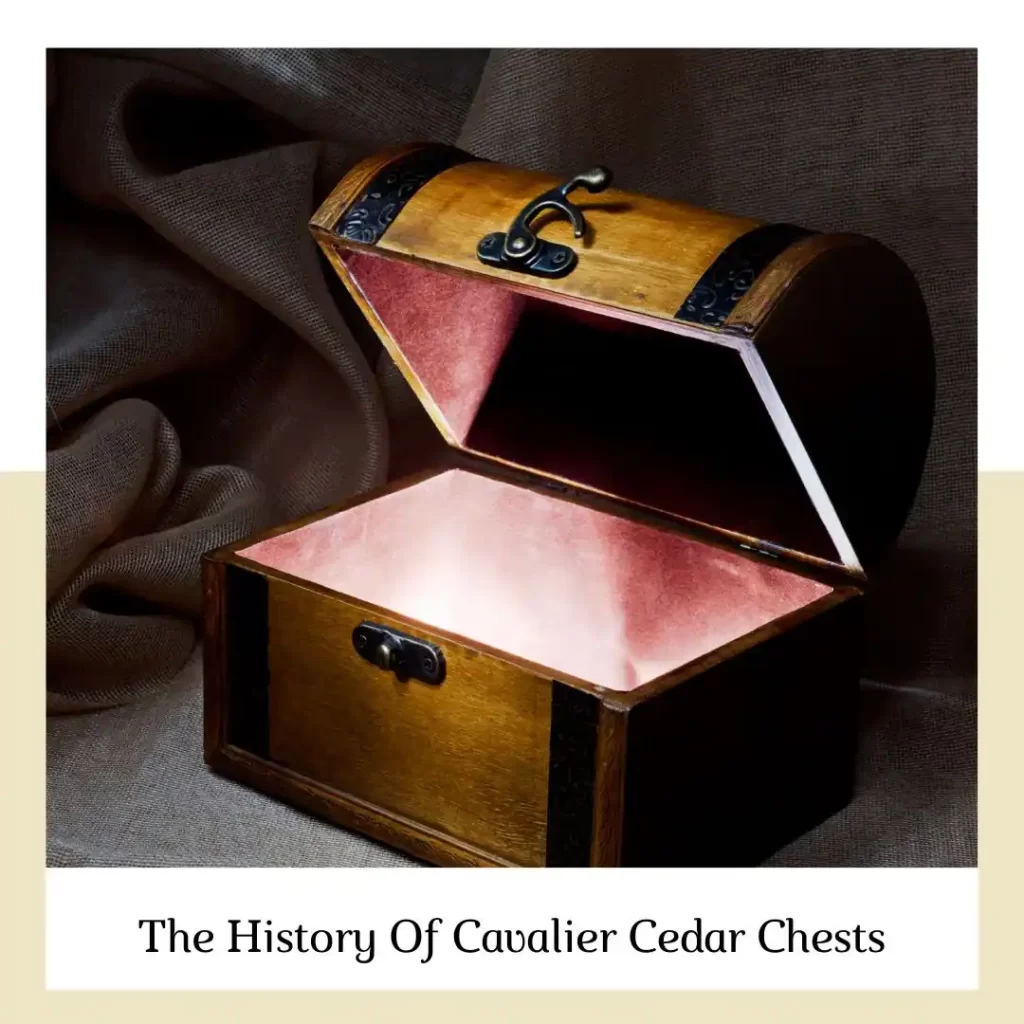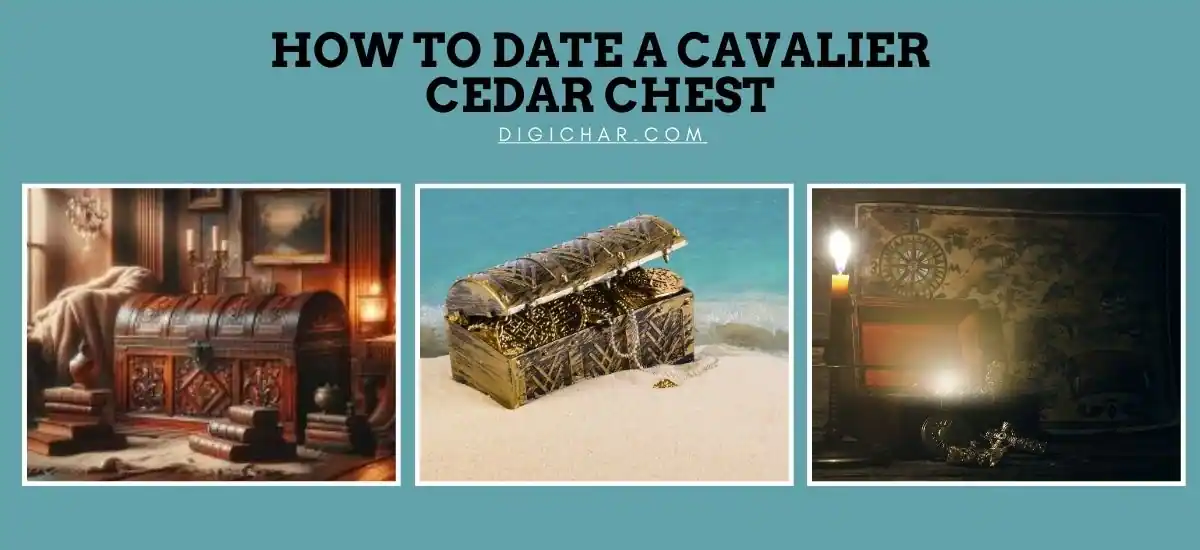Dating a Cavalier cedar chest is a fascinating journey into the world of antique furniture, blending the art of historical research with the thrill of discovery. These chests, renowned for their craftsmanship and beauty, are more than just storage pieces; they are a slice of history, each with its own story to tell.
Originating from the early 20th century, Cavalier cedar chests have become prized collectibles, known for their quality construction, distinctive styles, and the charming allure of bygone eras.
The process of dating a Cavalier cedar chest involves examining its design, construction details, materials used, and any manufacturer’s marks or labels. This detective work not only helps in establishing the chest’s age but also provides a glimpse into the cultural and design trends of the period it was made.
Whether you’re an antique enthusiast, a vintage furniture collector, or someone who’s inherited a family heirloom, learning how to accurately date a Cavalier cedar chest can be an incredibly rewarding experience, offering both a connection to the past and a tangible piece of history to cherish.
The History Of Cavalier Cedar Chests

1. The Cavalier Corporation: Established in Chattanooga, Tennessee, the Cavalier Corporation started as a furniture and cabinetry company. It gained fame for its cedar chests, which were popular for storing clothes and valuables, thanks to cedar’s natural moth-repellent properties.
2. The Great Depression and Cavalier: During the Great Depression, the demand for luxury items like cedar chests declined. However, Cavalier adapted by producing more affordable models, which also helps in dating their products. More ornate, luxurious chests are likely Pre-Depression, while simpler, more functional designs could be from the 1930s and beyond.
The Role Of Cavalier Chests In Popular Culture
1. As Wedding Gifts: In the early to mid-20th century, cedar chests were often given as wedding or engagement gifts, symbolizing hope and a new beginning. This tradition can sometimes help in dating a chest, especially if it has a provenance or a story attached to it.
2. Collectible Items: Today, Cavalier chests are considered collectible items. Their value ?. depends not just on age but also on condition, rarity, and historical significance.
Types Of Cavalier Cedar Chests
- Art Deco Style Chests (1920s-1930s)
- Waterfall Style Chests (1930s-1940s)
- Mid-Century Modern Chests (1940s-1960s)
- Colonial Revival Chests (1950s-1970s)
- Custom and Limited Edition Chests
- Safety-Lock Chests (Post-1987)
Era / Features / Materials / Significance
| Type | Era | Features | Materials | Significance |
| Art Deco Style Chests | 1920s-1930s | Geometric shapes, lavish ornamentation, bold lines | Rich woods like mahogany or walnut, sometimes with inlaid designs | Reflects the opulence and innovation of the Roaring Twenties and the pre-Great Depression era |
| Waterfall Style Chests | 1930s-1940s | Rounded fronts, ‘waterfall’ design, veneers flowing over edges | Common veneers include walnut and mahogany, often with decorative burl accents | Popular during the Great Depression, blending affordability and style |
| Mid-Century Modern Chests | 1940s-1960s | Simpler, cleaner lines, minimal ornamentation, functional focus | Mixed materials, including plywood and veneers | Mirrors the shift towards modernism and practicality in post-war America |
| Colonial Revival Chests | 1950s-1970s | Traditional designs, mimicking early American styles | Predominantly solid woods, focusing on durability and timelessness | A nod to American heritage and history, popular in post-war suburban homes |
| Custom and Limited Edition Chests | Variable | Unique designs for special events or limited series | Varies, often high-quality woods and special finishes | Highly collectible due to rarity and unique story or theme |
| Safety-Lock Chests | Post-1987 | Equipped with safety locks as per federal regulations | Similar to contemporary chests but with updated locking mechanisms | Reflects the focus on consumer safety in furniture design |
Tips For Verifying Authenticity
1. Original Hardware: Original hardware, like hinges and handles, can be a significant indicator of age. Over time, hardware styles have evolved, so original, unaltered hardware can help authenticate the chest’s age.
2. Signs of Aging: Genuine aging signs are different from wear and tear due to use. Look for consistent aging across the chest, like uniform fading of the wood and natural patina on metal parts.
The Role Of Cavalier Chests In Popular Culture

1. As Wedding Gifts: In the early to mid-20th century, cedar chests were often given as wedding or engagement gifts, symbolizing hope and a new beginning. This tradition can sometimes help in dating a chest, especially if it has a provenance or a story attached to it.
2. Collectible Items: Today, Cavalier chests are considered collectible items. Their value depends not just on age but also on condition, rarity, and historical significance.
Collecting And Valuing Cavalier Chests
1. Rarity and Condition: The value of a Cavalier chest is often determined by its rarity, condition, and historical significance. Limited edition models or chests with unique features may be more valuable.
2. Provenance: A chest with a known history or provenance can be more valuable. For instance, a chest that belonged to a notable person or was part of a significant event in history can increase its collectibility and value.
Preservation And Care
1. Maintaining the Cedar Lining: The cedar lining is crucial for the chest’s functionality. To maintain its aroma and effectiveness, lightly sand the interior every few years.
2. Caring for the Exterior: Use appropriate wood cleaners and avoid harsh chemicals. For veneered chests, be extra careful as the veneer can be delicate.
Restoration Considerations

1. Preserving Originality: When restoring a Cavalier chest, preserving as much of the original material and finish as possible is crucial. Replacement parts or significant alterations can diminish the chest’s value and historical integrity.
2. Professional Appraisal: Before undertaking any restoration, it’s advisable to get a professional appraisal. An expert can advise on the best course of action to preserve the chest’s value and authenticity.
Frequently Asked Questions :
Q1. How can I identify a genuine Cavalier cedar chest from a replica?
Answer: Look for the manufacturer’s label or stamp, usually found inside the chest. Genuine Cavalier chests often have a serial number that includes the production date. Also, examine the construction quality, wood type, and design style for authenticity.
Q2. What makes Cavalier cedar chests different from other cedar chests?
Answer: Cavalier chests are known for their high-quality craftsmanship, unique designs (like the Waterfall and Art Deco styles), and the use of premium materials. They also have a distinctive aroma due to the high-quality cedar wood used.
Q3. Can the cedar lining in my Cavalier chest be restored to its original scent and effectiveness?
Answer: Yes, lightly sanding the interior cedar lining can rejuvenate its scent and effectiveness. However, it’s advisable to do this sparingly and gently to avoid damaging the wood.
Q4. Are there any known issues with older Cavalier cedar chests that collectors should be aware of?
Answer: Older models, particularly those made before 1987, may have locking mechanisms that pose safety hazards, especially for children. It’s recommended to replace or disable these locks for safety.
Q5. How does the value of a Cavalier cedar chest change with restoration or modification?
Answer: Restoration can either increase or decrease the value, depending on the extent and quality of the work. Authentic, period-appropriate restorations typically enhance value, while modern modifications or poor restoration work can decrease it.
